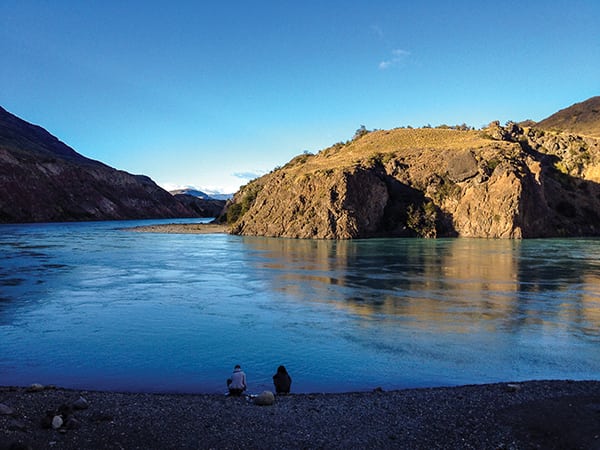Chile Axes 2.8-GW Hydro Project Permits
As the latest development in a contentious eight-year-long legal battle, Chile’s highest administrative authority in early June revoked environmental permits for five massive dams proposed in the country’s Patagonia region.
The decision by the Committee of Ministers means the 2.8-GW HidroAysén plan, an $8 billion proposal to build five dams on the Baker and Pascua Rivers (Figure 2) in Aysén, has effectively been stalled. However, project developers will likely appeal the decision in an environmental court, prolonging the legal battle.
HidroAysén is owned 51% by Enel’s Spanish subsidiary Endesa and 49% by Chilean firm Colbun SA. The project’s developers had called for more than 1,600 km of new power lines from the remote region in southern Patagonia to supply energy to central Chile. But though experts have warned that power-strapped Chile must triple its current 18-GW generation capacity within 15 years to continue growing its economy and to feed its energy-intensive mining sector, most Chileans have opposed the controversial hydroelectric scheme, sometimes with violent protests.
Opposition to the project also has the international backing of the U.S.-based Natural Resources Defense Council and International Rivers, environmental groups that claim the environmental permits originally granted in 2011 are wrought with “procedural irregularities and charges of misconduct.”
The government committee in June reached a unanimous decision to repeal environmental permission for the project, after reviewing 35 legal cases against it. It cited insufficient planning for the relocation of affected communities and the impact on local ecosystems for its decision.
“[We are] willing to develop the hydroelectric project in Aysén, for which [HidroAysén] has paid and will continue to pay for water rights, mining protection rights, sectorial administrative requests and the protection of interests before financial and judicial institutions,” wrote Daniel Fernández, executive vice-president of HidroAysén, in a letter to the committee, which comprised the ministers of agriculture, energy, mining, and economy.
Earlier in May, Chile released a $650 million investment plan to reduce energy costs and promote non-hydro renewable energy development for the country that imports about 60% of its primary energy resources. The plan calls for a 30% cut in marginal power costs on Chile’s central grid, which serves 90% of the country’s citizens, by 2018. It also requires that 45% of power capacity installed between 2014 and 2025 be from solar, wind, and geothermal sources to put Chile closer to its target of producing 20% of its energy from renewables. The government also called for energy savings of up to 20,000 GWh per year.
Chile’s power mix is dominated by hydropower, but droughts have left a country with no indigenous oil or natural gas reserves energy-strapped (see “Chile’s Power Challenge: Reliable Energy Supplies“ in the September 2012 issue). Beyond calling on the state oil company to boost exploration, the country also hopes to build a liquefied natural gas import terminal in the mineral-rich north.
—Sonal Patel, associate editor (@POWERmagazine, @sonalcpatel)
